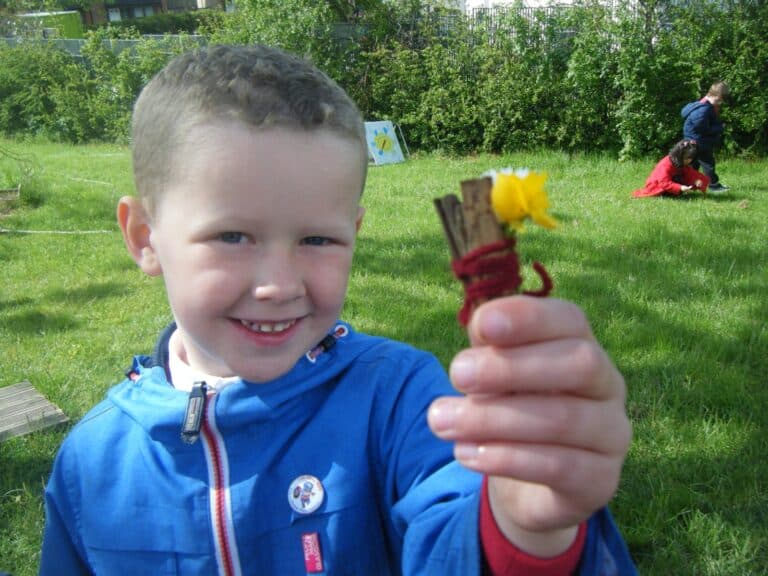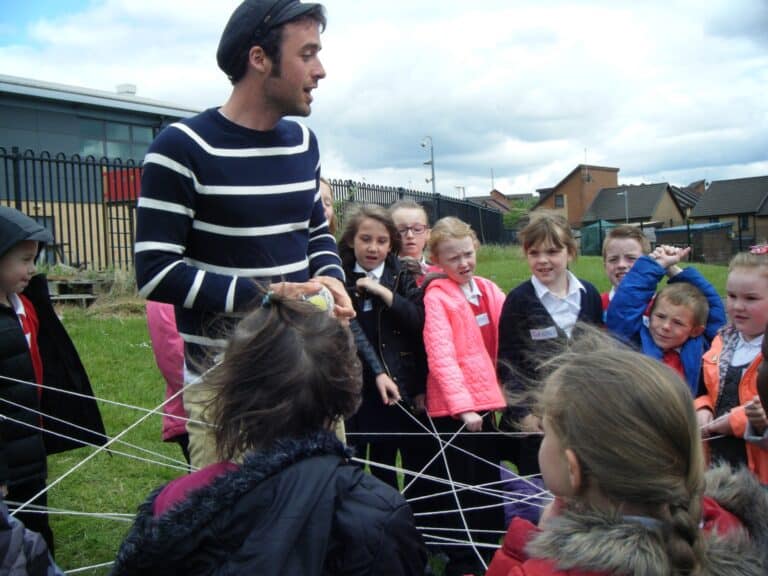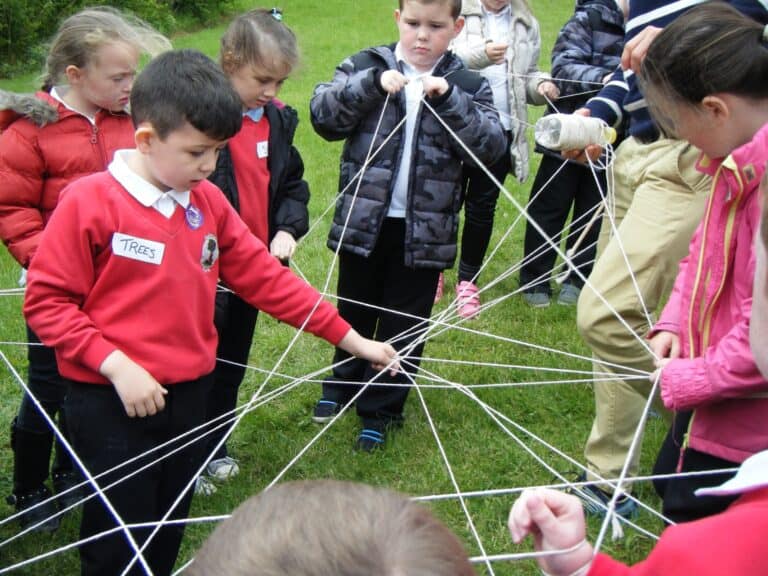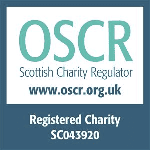“Why do people keep killing animals?” A P5 girl asked me this week.
“I just don’t know, Haley… maybe they don’t understand.”
“Maybe they don’t understand that we are all part of the same family”, she replied.

Over the 10 weeks of Out to Play, we’ve explored a diverse spectrum of the natural world. Water, plants, animals, waste, soil, sun and seasons, to name a few. For this final led week of out to play I therefore wanted to explore the ways in which all these incredible parts of nature are connected in a vast and amazing web of life.
We began in the classroom, were I asked children to think of something in nature that we had explored together, and which they thought was important. They wrote it’s name in large letters on paper (to a chorus of ‘can I use bubble writing?!’) and drew a picture of it. It was interesting to me that while there were a lot of the large romantic animals – lions giraffes, eagles etc., there were also many trees, and even some ants, worms and rivers. I wonder if our journeys through the natural world has instilled a wider sense of nature, and a greater appreciation of the small things as well as the big ones.

As we journeyed from the classroom to outside, I asked them to move and make sounds in the manner of what they had each drawn. When we then gathered outside I read them a wonderful message by Chief Seattle, a First Nations Native American chief. The speech ends “This we know: Man did not weave the web of life, he is merely a strand in it. Whatever he does to the web, he does to himself.” To me this is such essential wisdom for any age. The separation we have created between each other as humans, as well as between us and nature has caused unparalleled destruction. If future generations are to live in peace and survive on this planet we must all learn that the walls that divide us exist within our minds. All life is connected, and we must take care of the web of life just as it takes care of us.

To ground this wisdom in experience, we then played a brilliant permaculture game called ‘The Web of Life’, where the class stands in a close circle holding their piece of paper with an element of nature written on it. Standing in the centre I passed the end of a ball of string to one child. I found it worked best to start with a central element such as a tree or a worm rather than to a predator. Asking the question “so what needs this to live?”
The class put their hands up if they thought their piece of nature did. The string was then passed to them and onwards across the circle, one child at a time connecting to another. For example: trees need worms to live, worms need soil to live, soil needs lion to live when it dies and goes into the soil, and so on. It helped to think creatively about this life journey, and to ensure each child became connected until a great network is created.
At this point one brilliant P3 boy shouted out “hold on a minute… this is like a web! THE WEB OF LIFE!” It was so great to see the classes discover this for themselves and make those connections together. It was also a useful exercise to develop collaboration with the class.

I then asked.. “So what happens if humans come along and poison the river?” The river string holder drops their piece.
“Well the fish would die”, “Then the heron bird would be poisoned too”, “then the…” and so on. As each child drops their string the web sags and slowly collapses to the floor.
This exercise worked really well with almost all the classes above P2. There was one class who just couldn’t hold their string still so it became a bit more of a battle than the calm reflective exercise it should be, but mostly I was really impressed with how focused the children were, and they really seemed to get the ideas which was really exciting to me.
It felt important also that the classes aren’t taught the powerful belief that ‘all humans are bad for their environment’. At the end I therefore asked some of the classes “so what would happen to the web if you cleared a river of poison instead?”
“The fish would come back”, “herons would return”…
…and so the web can be healed with small actions too. Our commitment to stand up and make a change.


![glasgow city council logo [black] Glasgow City Council logo](https://ecodrama.co.uk/wp-content/uploads/2023/12/glasgow-city-council-logo-black.png)
